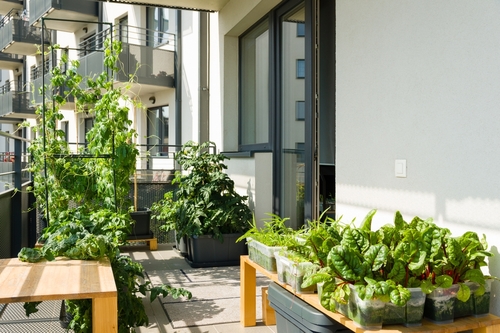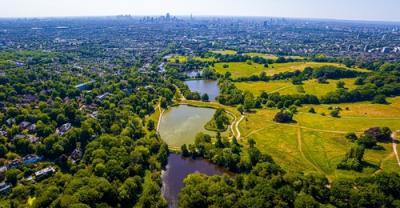One of the most popular recent additions to the RHS Chelsea Flower Show has been the Balcony and Container Gardens category. Balcony designers create gardens measuring only 5m x 2m on a podium surrounded by railings, mimicking the balconies on apartment blocks; while container gardens are created at ground level to the same dimensions, representing a small back yard or front garden. Never has the phrase small but perfectly formed been truer than in the presentation of these gardens.
It seems an intrinsic human need to have access to a personal outdoor space and for many people the option of a large garden is simply not viable. Indeed, in some cases a large garden is not desirable due to upkeep demands and nervousness about the skills required to care for a full-blown garden. But container gardening provides opportunities to create green oases in even the most unpromising situations with all the evidence-based holistic health benefits of interacting with nature, and with minimal horticultural skills needed.
Focussing on even the smallest outside space can help developers as they address the challenge of climate change and biodiversity loss. There are, for example previously untapped opportunities to better enable owners or tenants of new apartments to make best use of their balconies. Providing drainage is an easy fix in a new build and can avoid the nuisance of irrigation water dripping onto lower levels. Ensuring the structures can bear the load of fully planted containers is essential and for that reason, built-in planters could be incorporated into the construction design and installation.
Helpful contribution
Where only small rear or front gardens are provided, rug-sized patches of lawn are often laid over poorly prepared ground. It takes no time at all for this turf to deteriorate, leaving new residents with low-grade outdoor spaces that contribute nothing in terms of beauty, inspiration or ecological richness. Instead, we would recommend a permeable surface, with bricks for a cottagey look, aggregate compacted into modules for a sunny area or resin aggregate for a sleek, contemporary finish, each providing a quality surface for pots and containers. Again, built-in or installed planters around the boundaries would be a helpful contribution to new tenants or owners, and above-ground rain garden planters can support sustainable urban drainage systems (SuDS), slowing the pace of water run-off from roofs.
In terms of ecology, developers are required to deliver a minimum 10% net gain in biodiversity (BNG) for new projects. Ground level planters in amenity areas planted with shrubs and climbers do score on the BNG matrix and Urban Greening Factor calculations albeit with very low value whilst those in private spaces will not contribute to the matrix calculation at all. However, there is nevertheless potential for a significant ecological benefit to well-planted private balconies and courtyards in providing food sources and habitats for birds and insects and even small mammals and reptiles if suitable conditions prevail.
For those developers who aspire to creating an ecologically rich development, these small spaces have potential to contribute to the overall vision and ambition.
In terms of environmental responsibility, the property development sector faces huge challenges to achieve net zero emissions from construction projects. An essential factor in this is to move speedily toward green infrastructure-led developments where the networks of green spaces and habitats lead the design process, reversing the pattern of green interventions simply filling the spaces left over from the building and road layout.
Green infrastructure includes everything from macro interventions (woodlands, meadows, waterways etc.) to micro (seed mixes, nectar rich perennial planting, climber clad walls etc.). Balcony and container plants can be considered within the latter, even contributing to connectivity of green infrastructure when designed as integral elements of a development from the outset.













.png)


.png)



Join the conversation
Be the first to comment (please use the comment box below)
Please login to comment